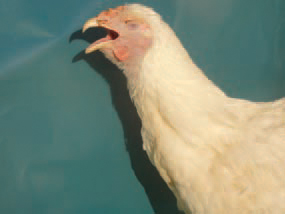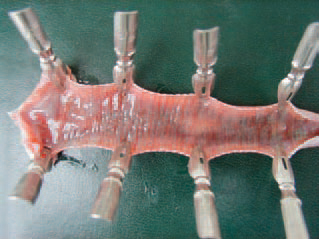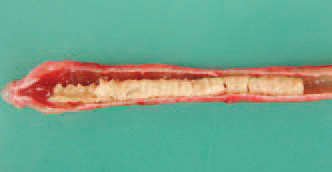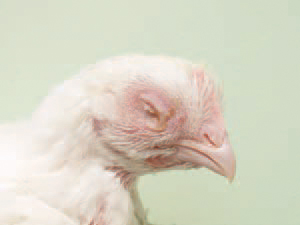|
Diseases of Poultry
By Ivan Dinev, DVM, PhD
|
LARYNGOTRACHEITIS

232.Laryngotracheitis (LT) is a viral infection in hens, pheasants and peacocks characterized by catarrhal haemorrhagic to fibrinous inflammation of the respiratory tract. It is manifested in laryngotracheal and conjunctival form. In the laryngotracheal form, suffocation, rales and cough are observed. The head and the neck are strongly extended forward and upward during inspiration.

233.mucous coats of the larynx and the trachea are catarrhally haemorrhagically to fibrinously inflamed. Most outbreaks are encountered between the age of 4 and 14 weeks although the disease affects fowl of any age. LT is caused by a herpesvirus that is relatively resistant.

234.Haemorrhagic laryngotracheitis. The morbidity rate of LT reaches 50-70% and the death rate: 10-20%. Often, it goes on as a complicated infection after the involvement of E. coli, St. aureus, M. gallisepticum etc.

235.In some cases, casts of haemorrhagic or fibrinous exudate are formed that could almost completely obturate the larynx and the trachea. Source of the infection are sick and convalescent birds, the latter being prolonged carriers of the virus (up to 1 - 2 years). With this regard, a certain stationarity is observed.

236.In the conjunctival form of LT, wet eyes, tear secretion and oedema of infraorbital sinuses are observed, especially in a complicated infection. The typical clinical and morphological signs are sufficient to assume the presence of LT. The diagnosis is confirmed with the detection of intranuclear inclusion bodies in the trachea throughout the histological study in the early stages of the disease, serological studies (VN, ELISA) etc. LT should be differentiated from IB, SHS, M. synoviae infections etc. Premises, contamined with the LT virus, should be freed, cleansed, disinfected and occupied again after 5 - 6 weeks. The vaccination of unaffected birds and these from other premises of the infected farm could protect and stop subsequent outbreaks.






